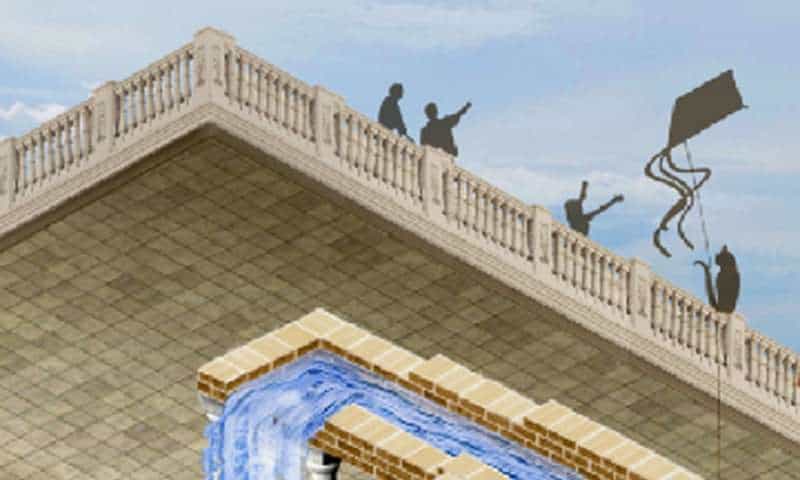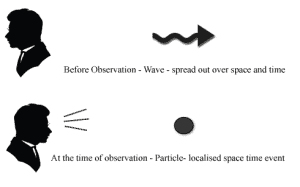In the ‘real’, macroscopic world, matter and energy follow some strict and inescapable rules. For instance, water flows from a higher elevation to a lower elevation, heat follows a temperature gradient from hot to cold, and electricity flows from negative poles to positive poles. A group of researchers claims, however, that in a quantum system the direction of flow of a current can be reversed if an observer is introduced. The authors argue that the basic tenets of thermodynamics still stand, despite this counterintuitive finding.
What you see cannot be unseen
When doing quantum physics, it’s best to leave prejudice and other notions of how physics behaves on the macroscopic level at home. One weird quirk of the quantum domain is the so-called ‘observer effect,’ whereby a quantum system can be disturbed in some way by measurement. One famous illustration of the observer effect is the classic double-slit experiment which was used at the turn of the last century to demonstrate light’s particle-wave duality. This double nature means light behave wave-like, interfering in the same way that water ripples cross each other, while at the same time it is also particle-like, carrying its energy in discrete bundles known as photons.
If one neglects to observe which slit a photon passes through, it appears to interfere with itself, suggesting that it behaves as a wave by traveling through both slits at once. But, if one chooses to observe the slits, the interference pattern disappears, and each photon travels through only one of the slits. Strange as it may sound, interference can only occur when no one is watching.
In 1998, researchers at the Weizmann Institute of Science performed an experiment which revealed that the greater the amount of “watching,” the greater the observer’s influence on a beam of electrons. The observer, of course, doesn’t necessarily refer to a human. In this case, it was an electronic detector that can spot passing electrons. Just the presence of this detector near one of the slits caused changes in the interference pattern of the electron waves passing through the openings of the barrier. When the level of the observation went up, the interference weakened.
I spy with my photon detector…
In a new study that highlights the observer effect, a team of researchers led by Professor Ángel Rubio of the UPV/EHU and of the Max Planck Institute PMSD showed in a theoretical model that current can be reversed in a quantum system.
“The process of observation changes the state of the system, and this makes it more likely that the current will be made to flow in one direction or another,” said Rubio in a press release.
Rubios goes on to explain that when an ‘observer’ is introduced into a quantum system, it acts as an obstacle It’s akin to closing off the channel in a pipe through which water is flowing and once the load builds up, the water will begin to flow in the opposite direction. In our very odd case, this theory suggests that the observer’s presence can reverse the current flow. The observer also reverses heat flow, from cold to hot. “In other words, the observer projects the state of the system onto a state that transmits the current or energy in opposite directions,” Rubio said.

An mind-bending illustration of the observer’s effects on the quantum system. Depending on where and when the observer is positioned, the water can flow differently. Credit: K. Aranburu.
The physicist insists that his findings do not infringe upon any fundamental theorem of physics, as energy and entropy are preserved.
“Initially, we thought it was an error. We expected to come across changes and we thought it would be possible to halt the transport, but we didn’t expect there was going to be a complete change of flow. These changes in the direction of the current can also be made in a controlled way. Depending on where the observer is inserted, the flow can be changed, but there are specific areas in the device in which, despite looking, the direction does not change,” he says.
The direction of heat and current can be independently controlled, the authors reported in the journal Quantum Materials — even if that means going against the natural temperature and voltage gradients. Such a device could be extremely useful in applications like thermoelectrics, spintronics, phononics, and detection, among others. For now, at least, such a device is out of reach due to challenges involving the design of the observer.
“Carrying out this process experimentally would be another matter. Although the type of device that would need to be designed exists, and producing it would be feasible, right now, there is no possibility of doing this in a controlled way,” Rubio concluded. “We’re look for other mechanisms as an alternative to quantum observers that would allow similar effects to be achieved and which would be more realistic when it comes to implementing them experimentally,” he added.











